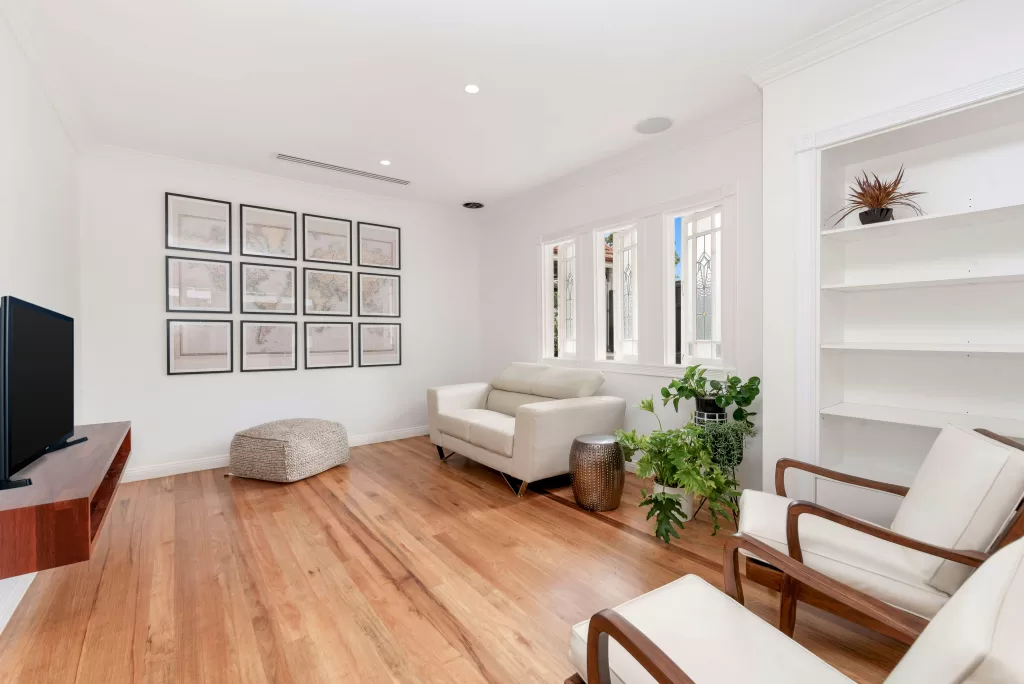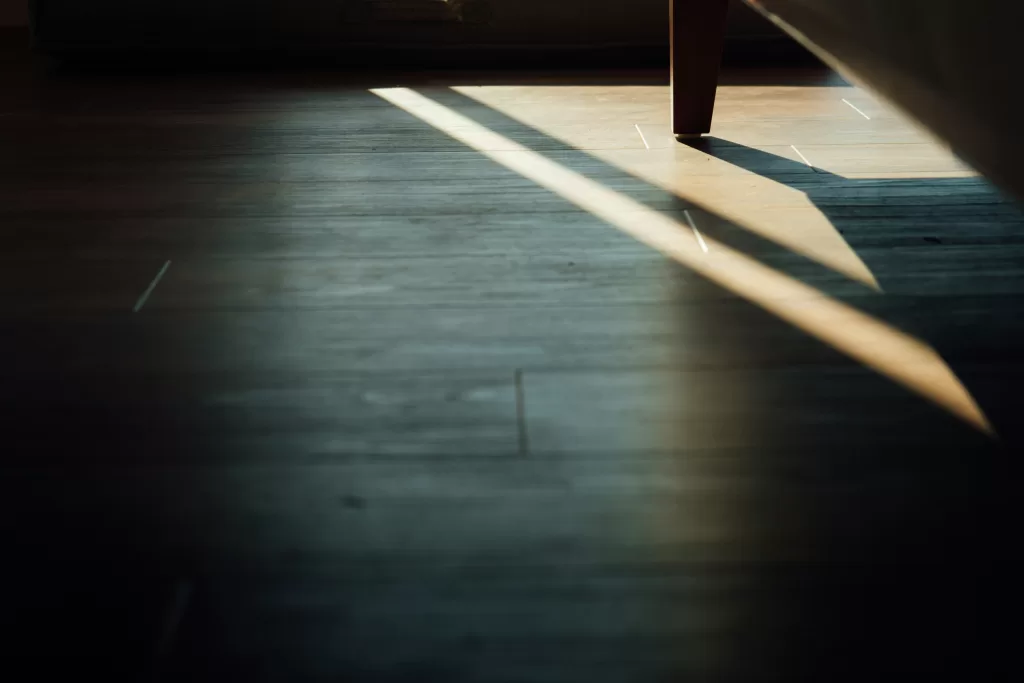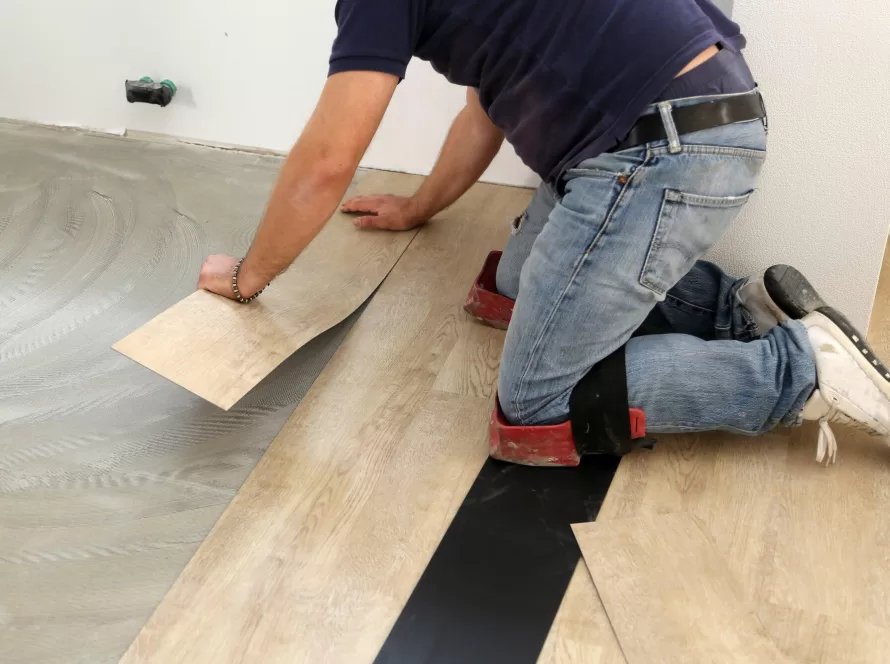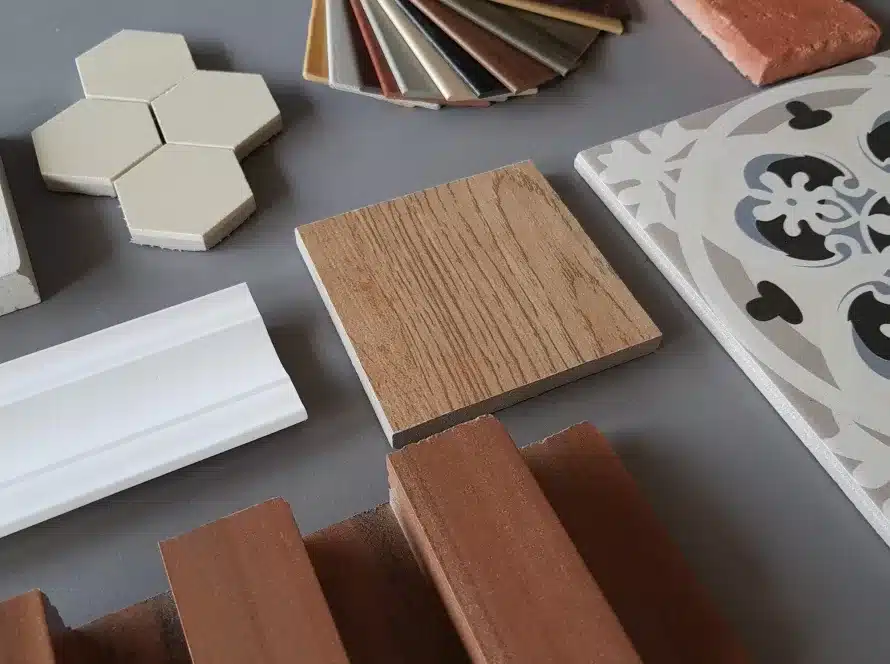Vinyl plank flooring is a highly versatile and durable option for homes, mimicking the look of hardwood with easier maintenance. When you install vinyl plank flooring, the direction matters more than you might think. It can impact the visual appeal of your space and even affect how long your floors last.
In this blog post, the pros at Alpha Living will explore the key factors to consider when deciding which direction to install vinyl plank flooring. From room shape and traffic flow to design preferences and natural light, we’ll break down everything you need to know to make the best decision for your home.
What Is Vinyl Plank Flooring?

Vinyl plank flooring is a versatile and durable flooring option that replicates the appearance of hardwood flooring. It is composed of several layers. This includes a wear layer, a decorative layer with a high-resolution image, and a core layer made of high-density or medium-density fiberboard.
Vinyl plank flooring offers numerous advantages, such as affordability, ease of installation, and low maintenance requirements. It is resistant to moisture, stains, and scratches, making it suitable for various areas of the home, including kitchens, bathrooms, and basements.
With its wide range of styles, colors, and textures, vinyl plank flooring provides homeowners with an attractive and practical flooring solution for any space.
Longitudinal Installation
Longitudinal installation, laying vinyl plank flooring parallel to the longest wall, can significantly impact the look and feel of your space. Let’s look at the specifics of this installation method below.
Advantages
One of the primary advantages of longitudinal installation is its ability to create a sense of continuity and elongate the room visually. By following the length of the space, this orientation can make the room appear larger and more spacious, particularly in narrow areas like hallways or corridors.
Additionally, longitudinal installation minimizes the number of cuts needed for installation, resulting in a cleaner and more seamless appearance.
Disadvantages
However, there are some disadvantages to consider with longitudinal installation. Because the planks run parallel to the longest wall, any irregularities or imperfections in the subfloor may be more noticeable.
This can detract from the overall aesthetic appeal of the flooring. Furthermore, in smaller rooms, longitudinal installation may accentuate the narrowness of the space if not balanced with appropriate design elements.
Suitable Room Types
Longitudinal installation is particularly well-suited for certain room types. It works best in narrow, long rooms where creating a sense of length is desired, such as corridors or hallways.
In open-concept spaces, where visual continuity and cohesion are essential, longitudinal installation can help tie the various areas of the room together seamlessly. By considering these advantages, disadvantages, and suitable room types, you can determine whether longitudinal installation is the right choice for your space.
Transverse Installation
Transverse installation, where vinyl plank flooring is laid perpendicular to the longest wall, offers unique benefits and considerations. Let’s explore this installation method.
Advantages
Transverse installation provides a visually pleasing effect by creating a sense of width in the room. By running against the length of the space, it can make the room feel wider and more expansive, especially in smaller areas.
Additionally, this orientation can enhance the overall aesthetic appeal by showcasing the width of the planks and adding visual interest to the flooring.
Disadvantages
However, there are potential disadvantages to transverse installation. Because the planks run perpendicular to the longest wall, any irregularities or imperfections in the subfloor may be accentuated.
This could detract from the overall appearance of the flooring, particularly if the room has significant deviations in its surface.
Suitable Room Types
Transverse installation is well-suited for various room types, particularly those where creating a sense of width is desired. It works effectively in smaller rooms or spaces with limited width, such as bedrooms, living rooms, or dining areas.
Additionally, in rooms with distinct architectural features or focal points, transverse installation can help accentuate these elements and enhance the overall design aesthetic.
Diagonal Installation
Finally, we have diagonal installation, a less common but visually striking approach, which involves laying vinyl plank flooring at a diagonal angle to the walls. Let’s explore this distinctive installation method.
Advantages
Diagonal installation adds dynamic energy and visual interest to the room by creating a unique pattern. This orientation can make the space feel larger and more spacious while also drawing attention to architectural features or focal points.
Furthermore, diagonal lines can help mask minor imperfections in the subfloor, resulting in a more uniform appearance.
Disadvantages
However, there are potential drawbacks to diagonal installation. It typically requires more cutting and waste compared to longitudinal or transverse installation methods, which can increase installation time and cost.
Also, aligning the planks at a diagonal angle may require more precision and expertise to achieve a seamless look. This is especially true in rooms with irregular shapes or obstructions.
Suitable Room Types
Diagonal installation is well-suited for rooms where you want to make a bold design statement or create a sense of movement. It works particularly well in larger spaces with expansive floor areas, such as living rooms, dining rooms, or open-concept areas.
Additionally, diagonal installation can complement rooms with unique architectural features, such as angled walls or alcoves, by accentuating their design elements.
Factors to Consider
When installing vinyl plank flooring during a remodeling project, several factors come into play to ensure optimal results for your space. Let’s look at these key considerations below.
Room Shape and Size
The shape and size of the room are fundamental aspects to contemplate when deciding on the installation direction of vinyl plank flooring.
In smaller rooms, such as bathrooms or hallways, installing the planks parallel to the longest wall can create an illusion of a larger space. Conversely, in larger rooms, the direction of the planks may vary depending on the layout to achieve balance and visual appeal.
Entryways and Traffic Flow
Entryways and high-traffic areas dictate the flow of foot traffic within a room. Installing vinyl plank flooring perpendicular to the main entrance can visually enlarge the space and lead the eye toward the focal point of the room.
Additionally, aligning the planks with the primary traffic flow minimizes the appearance of wear and tear, ensuring longevity and durability.
Visual Aesthetics
Visual aesthetics as well as personal preferences play a crucial role in determining the installation direction of vinyl plank flooring. For instance, if you desire a traditional or classic look, installing the planks parallel to the longest wall may be ideal.
On the other hand, opting for a diagonal installation can add visual interest and dynamic energy to the room, making it appear more spacious and inviting.
Natural Light and Room Orientation
Natural light and the orientation of the room influence the perception of space and ambiance. Installing vinyl plank flooring perpendicular to the direction of incoming natural light can enhance the visual continuity and brightness of the room.
Moreover, considering the orientation of windows and doors can help determine the optimal direction to showcase the beauty of the flooring and create a harmonious environment.
Tips for Optimal Installation Direction

Choosing the best direction for installing vinyl plank flooring involves careful consideration of various factors. Here are some helpful tips to guide you.
Assessing Room Dimensions
Before deciding on the installation direction, assess the dimensions of the room carefully. Consider the length, width, and shape of the space to determine which orientation will best enhance its proportions.
For example, in smaller rooms, installing the planks parallel to the longest wall can create the illusion of more space. In larger rooms, the direction may vary based on achieving balance and visual appeal.
Evaluating Traffic Patterns
Take into account the flow of foot traffic within the room when determining the installation direction. In areas with heavy traffic, such as entryways or corridors, it’s advisable to align the planks with the primary traffic flow.
This can minimize the appearance of wear and tear and ensure the longevity of the flooring. You should also consider how the installation direction will impact the ease of movement and functionality of the space.
Considering Visual Impact
Lastly, think about the visual impact you want to achieve with the flooring installation. The direction of the planks can significantly influence the overall look and feel of the room.
For a traditional or classic aesthetic, installing the planks parallel to the longest wall may be preferable. On the other hand, opting for a diagonal installation can add visual interest and create a dynamic focal point in the room.
Which Direction Should You Install Vinyl Plank Flooring?

Compare Quotes from Top-rated Flooring contractors in your area.
In summary, choosing the right direction to install vinyl plank flooring is essential for enhancing the beauty and functionality of your space. By carefully considering factors such as room dimensions, traffic patterns, and visual impact, you can achieve optimal results.
If you’re ready to transform your home with new flooring, trust Alpha Living to connect with professional contractors who can assist with your installation needs. Simply enter your zip code and let us help you find the perfect contractor for the job.





Facebook
Comments